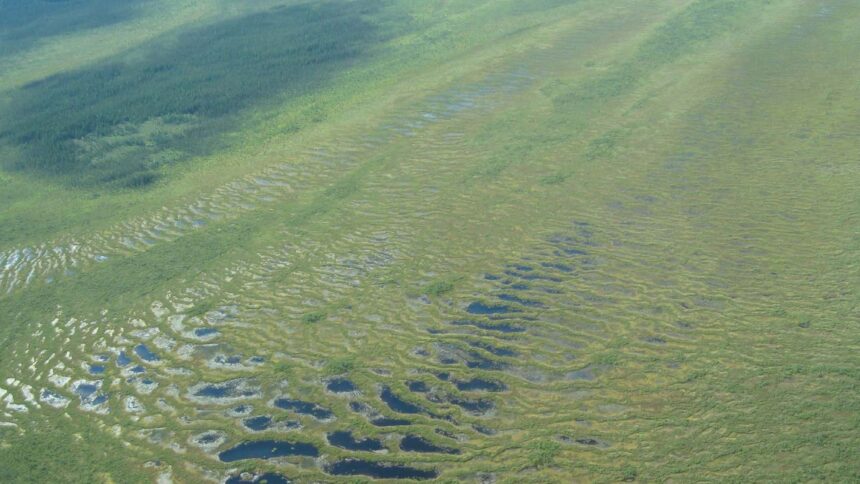Ontario and Webequie First Nation in northern Ontario have signed a deal worth $39.5 million that will “unlock economic development” and fast-track an all-seasons road leading to an area called the Ring of Fire. “This historic agreement is a massive milestone in our plan to protect Ontario, achieve economic reconciliation with First Nations and bring prosperity to Northern Ontario and across the province by unlocking the Ring of Fire,” Premier Doug Ford said in a statement released Wednesday afternoon. The money will go towards “community infrastructure and supports,” said the province, adding that the money is “a critical step in the development and construction of the proposed all-season Webequie Supply Road to the Ring of Fire.” The community has until January 2026 to submit its environmental assessment for the road that will be approximately 150 km. “Pending approvals and consultations, construction will begin on the Webequie Service Road in June 2026,” the statement said, “subject to the federal government ending its duplicative impact assessments in the region. The Ring of Fire, located in an area called the James Bay Lowlands, approximately 500 kilometres northeast of Thunder Bay, covers about 8,000 square kilometres, according to the province. It is a massive area rich in minerals critical to modern living. The province has been running advertisements during the World Series between the Toronto Blue Jays and the Los Angeles Dodgers, touting the importance of the area. “Metals like nickel, cobalt, titanium and lithium are required to make the technology we use every day work. And guess what? Ontario is one of the most mineral-rich areas in the entire world,” a longer version of the ad says. “Ontario can be a critical mineral superpower. Ontario’s abundant supply of critical minerals is found all over our province. But nowhere as exciting or rich with deposits as the Ring of Fire.” First Nations in the area, largely ignored by both the federal and provincial governments, are suddenly very important to both provincial and federal governments, trying to mine these minerals and make Canada a mineral superpower. But there is little to no infrastructure in the area. Many communities are linked by ice roads or are fly-in only. “The Webequie Supply Road is more than a road — it’s a pathway to opportunity, access and growth on our terms,” said Cornelius Wabasse, chief of Webequie First Nation in the statement released by the province. “This Agreement with Ontario is a meaningful step in our ongoing work to lead development that supports our community’s well-being, strengthens our infrastructure, upholds Webequie First Nation’s way of life and creates lasting economic opportunities for our people.” The area in the James Bay Lowlands called the Ring of Fire published by the Ontario government. According to the statement, the money will also go towards “community priorities” including resources for “mental health and social supports and a new indoor multipurpose facility for sports, recreation and social gathering.” “In addition, funding will support local jobs and the procurement of materials and equipment needed to begin early work for the road to the Ring of Fire. The agreement will also rebuild and upgrade the community airport, which will serve as a regional transportation hub and explore additional all-season road links for Webequie First Nation to the rest of the province.” But not all communities in the Ring of Fire area are in support of unearthing these minerals, or the way Ontario is going about pushing the project on communities. Neskantaga First Nation, located on the western shores of Lake Attawapiskat, released its own statement condemning Ontario. “For Neskantaga, whose homelands and river systems stand to be directly affected by the Ring of Fire mining and road development, Ford’s remarks are a direct attack on Indigenous rights and on Canada’s own safeguards,” said Chief Gary Quisess in the statement. “The Impact Assessment Act exists to ensure that projects with major environmental and cultural consequences – such as roads, mines and processing facilities in the Ring of Fire – receive meaningful federal oversight and uphold Treaty and Aboriginal Rights.” Neskantaga is located just west of the main mining claim area. There are a number of environmental concerns about mining the area. According to an article on the Wildlife Conservation Society Canada (WCSC) website, the lowlands “are often cited as the second-largest peatland complex in the world,” and absorb “the equivalent of around 1.6 billion tonnes of CO2” each year. Researchers at York University found that ”the access roads and the mines that will follow—many of them open-pit by necessity—will cause vast cumulative damage to a sensitive peatland ecosystem.” Before any shovels go in the ground, the mining project must go through several levels of review, including a federal impact assessment, which measures the pros and cons of a proposal and looks at the economic and environmental costs versus the advantages. The ongoing federal assessment that started in February 2020 to “gather information and data on the region; understand potential effects from past, existing and future development in the Ring of Fire area, including cumulative and interactive effects; inform future impact assessments; and identify and provide recommendations on how the potential effects may best be managed to avoid adverse consequences, enhance positive ones and how this should happen.” According to the assessment posted online. In August, the federal government put out a notice asking for information from communities to “to better understand current and potential future effects of development in the Ring of Fire area.” In June, Ontario passed Bill 5 – the Protect Ontario by Unleashing our Economy Act, which received pushback from First Nation leaders over a lack of consultation. The law, which was rushed through the Ontario legislature with little debate, has a clause called “special economic zones” which allows the provincial government to circumvent a number of pieces of legislation, including municipal laws, to fast track major projects. Continue Reading
Ontario, Webequie First Nation sign $39M infrastructure deal related to Ring of Fire

Leave a Comment










